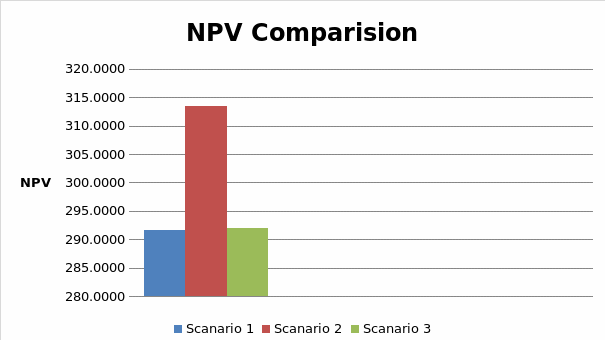Introduction
The firms’ management is faced with the making of many rational decisions that have pecuniary implications on the financial performance of the firm (Jun, 2010, p. 132). As such, the management applies many financial tools in the making of these vital decisions including the Net Present Value (NPV) of the cash flows.
The NPV seeks to calculate the net present value of all the cash flows of a project that the firm is pursuing to establish whether the project should be undertaken. The NPV uses the expected rate of return to discount the project’s cash flows and seeks to establish what the investor needs to sacrifice today in order to earn $1 in the future.
Firms exist to create value for the owners who are the shareholders. Hence, the shareholders delegate the decision-making role to the management (Plumlee, 2010, p. 34). The following case utilizes the NPV to enable the management of McBurger Asia to make an investment decision by analyzing the most viable project from the alternative investment options.
Choice of the best scenario
The best scenario to pursue is taking the offer by Bisy which entails outsourcing the production of the three products and reinvesting the production funds in China’s expansion program. By comparing the NPV of the three options, it can be seen that the scenario yielding the least cash requirement is scenario1. This option yields a cash requirement of US$ 291.6673. This implies that the scenario will offer McBurger the least financial strain. The second scenario that entails retaining the production and acquiring a new machine in year 2 should be the last to consider as it requires the most financial injection of US$ 313.3538. All the calculations are shown on the excel sheet attached. The table1 and figure1 below represent the three NPV cash flow requirements of McBurger in regard to the three investment scenarios.
Table1. A Summary of comparison of cash requirement (NPV)

What to consider in making an investment decision?
No. McBurger should also consider many other factors that have an implication on the performance of the firm. For instance, the quality of the packaging offered by Busy Company should be interrogated as this could negatively impact the firm’s image.
The McBurger packaging is widely identified because of the Golden B is displayed prominently on all products, hence this should be maintained.
McBurger management should also consider the sources of funds are at their disposal. For example, the second and the third scenarios involve the acquisition of assets which are capital investments and require huge outlays of funds. Hence, the McBurger should consider whether they have the capital needed for investment in the new machine. Also, they should compare the cost of acquiring investment funds from the lenders. The management should choose the cheapest cost of capital in order to make the maximum returns on the funds invested (Nobes & Parker, 2010, p. 54).
McBurger should also consider the ability of Bisy to maintain the supply of the packaging material. The demand for the material is expected to grow into the future and hence it is apparent that the long-term sustainability of supply is considered. The management should finally consider the benefits that arise from the economies of scale. As the demand packaging material requirement heightens, it will be uneconomical to pay a fixed price per packaging item production. As such, the cost of production per item should decline as opposed to a fixed cost offered by Bisy.
References
Jun, W 2010, Accounting with Heart: China’s Role in International Finance and Business, John Wiley & Sons, New York.
Nobes, C. & Parker, R 2010, Comparative International Accounting (11th ed), Prentice Hall, London.
Plumlee, M 2010, International Financial Reporting Standards, Pearson Education, Upper Saddle River.